

The Trail’s importance is personal, in each of our stories.
Its significance is broader. Remarkable for its length of 2,190-miles that pass through 14 states, the A.T.’s magnitude is that it traverses the crest of one of the most significant land features in the eastern United States. That land feature — a system of contiguous mountains famously known as the Appalachians — encompasses several distinct biomes that support wildlife and vegetation, vital to the overall health and sustainability of the eastern United States. It is equally important in preserving the history of Native and other American cultures and the birth and progression of our country.
More than half of America’s population currently resides within a day’s drive from some part of the Trail and hundreds of communities within nearby proximity of the A.T. thrive on a strong outdoor recreation-driven economy. In 2017, more than three million people enjoyed the A.T. as day hikers, weekend backpackers, and those seeking to conquer its formidable length as section-hikers or thru-hikers. The A.T.’s visitor numbers continue to increase.
We — the Appalachian Trail Conservancy (ATC) and all who support our mission — are the guardians of the iconic and world-renowned Appalachian Trail. The ATC has much to celebrate as we look back at 2017. In this report you will learn about our efforts to Educate, Protect, and Empower. Some of our accomplishments include ►
Some, such as the emerald ash borer and the American chestnut blight, have caused near complete extinction of their hosts. Invasive species are a landscape scale issue — a challenge far too large to tackle alone. The ATC has inventoried over three fourths of the Trail to identify areas of greatest invasive concern. Our resource management work has been focused on implementing projects to curtail the spread of the emerald ash borer, an invasive forest pest that is decimating populations of ash trees. Addressing habitat loss, we have focused on expanding habitat for the golden-winged warbler and pollinators such as monarch butterflies and bees.
Furthermore, we continue to nurture our Next Generation Advisory Council, now in its third year. This council contributes new ideas and time to ATC, joining us at board meetings, Hike the Hill in D.C., and at many regional meetings. Their presence and fresh ideas feel like shifting winds.
As might be expected with the A.T.’s increased visitor numbers, iconic spots on the Trail are often experiencing high-volume, sometimes staggering visitor use. The ATC and its Trail Clubs are working tirelessly to ensure that both the hikers’ experience and Trail resources are well looked after. Work at McAfee Knob represents the best of our collaborative model — where the ATC, local Clubs, National Park and Forest Service work together to ensure everyone can continue to enjoy this beautiful, highly photographed location.
The Appalachian Trail Conservancy understands the power of these stories. Individually and collectively they make up all that is the Trail. Now, perhaps more than ever, it is important that we encourage people to experience the Trail and that we record, share, and celebrate those stories.

With your support, the Appalachian Trail Conservancy will continue to protect and preserve this simple footpath. We are all guardians of this important and treasured landscape. Together we will ensure its presence now and for the future.
Suzanne Dixon / President & CEO
Sandra Marra / Chair
To protect such a broad landscape, the A.T. Landscape Partnership — the ATC’s landscape initiative — works to unite a broad array of people in rallying partners and communities in common goals to conserve the value associated with the A.T. The A.T. Landscape Partnership works to conserve lands that are threatened and significant natural habitat, cultural, and historic sites. In 2017 alone, partner organizations completed 15 land acquisition projects, conserving approximately 10,200 acres along or adjacent to the A.T. One of those projects included the largest unprotected property along Pennsylvania’s Kittatinny Ridge: a 4,662-acre parcel that, when acquired, will become part of Cherry Valley National Wildlife Refuge.
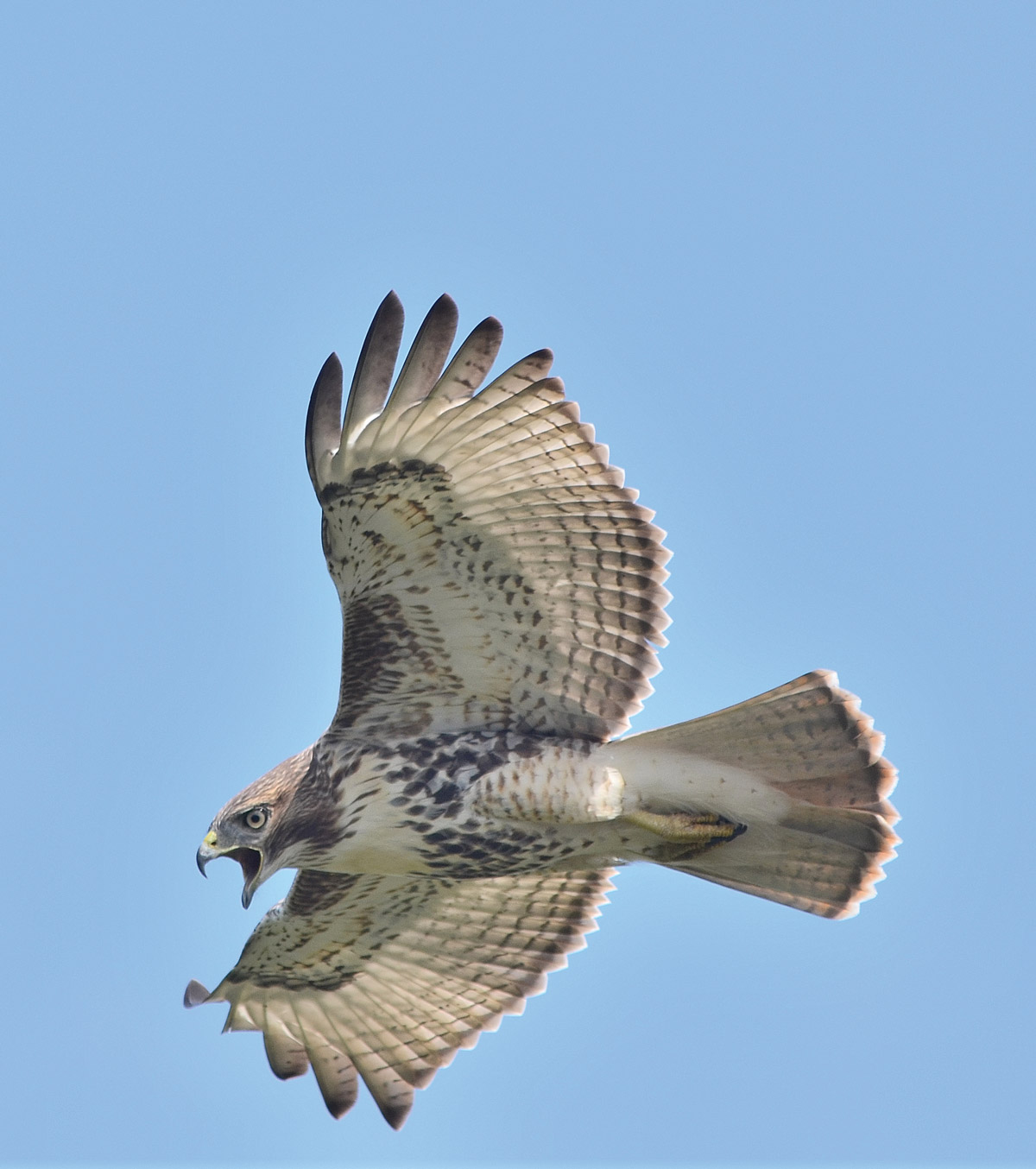
In 2017, Phase I of the property was completed, which included the purchase of 1,731 acres by The Conservation Fund and the subsequent transfer of that acreage to Cherry Valley National Wildlife Refuge. The remaining 2,931 acres — Phase II of the project — will close in 2018. The successful conservation of all 4,662 acres will preserve more than five miles of the A.T., ensuring the integrity of the Trail and its landscape remain for future generations.
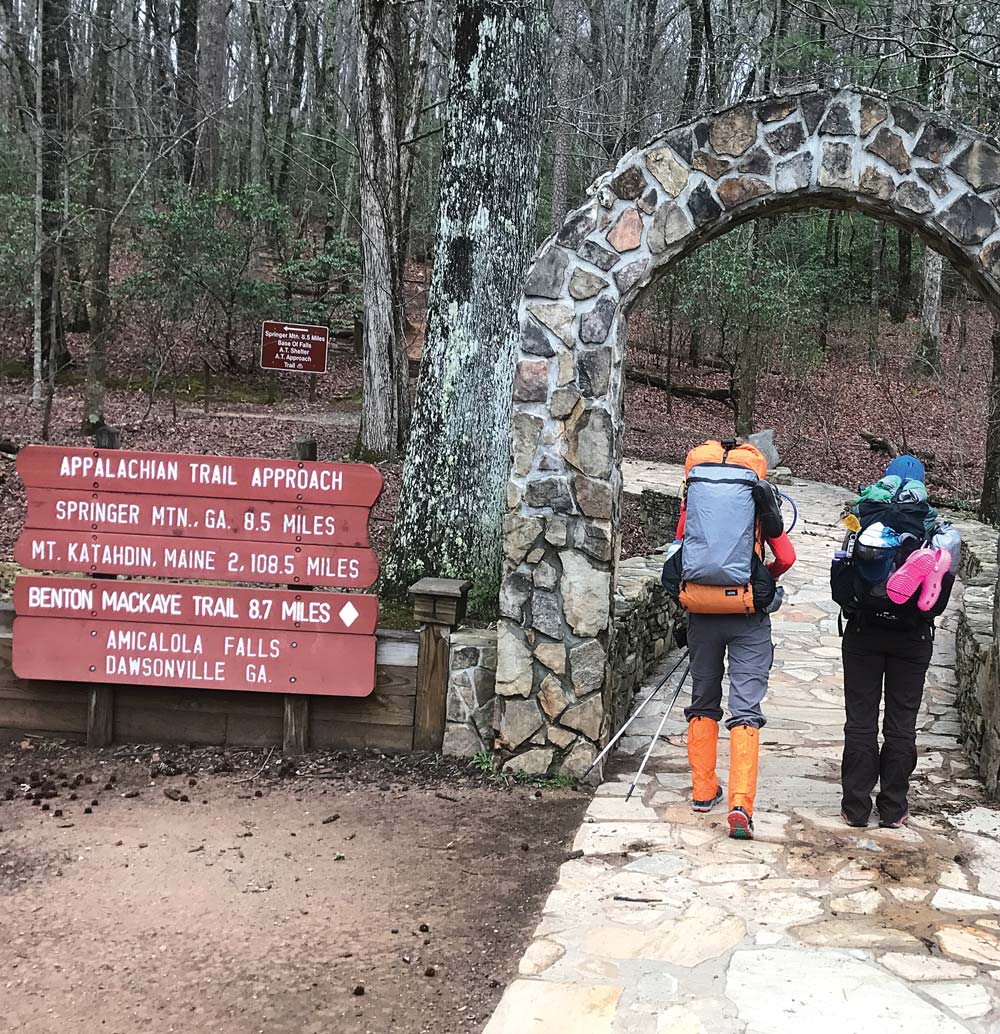
Currently there are three registration types: Groups, Section Hikers, and Thru-Hikers. A.T.CAMP allows A.T. hikers to be part of the crowding solution — it provides a tool that allows them to see the number of other campers registered for a site to avoid crowded campsites and the damage that results. Voluntary registration enables hikers to enhance their A.T. experience and enables us to better manage the A.T. — without additional regulations. It also encourages hikers to learn and follow Leave No Trace ethics to better protect the Trail they love.
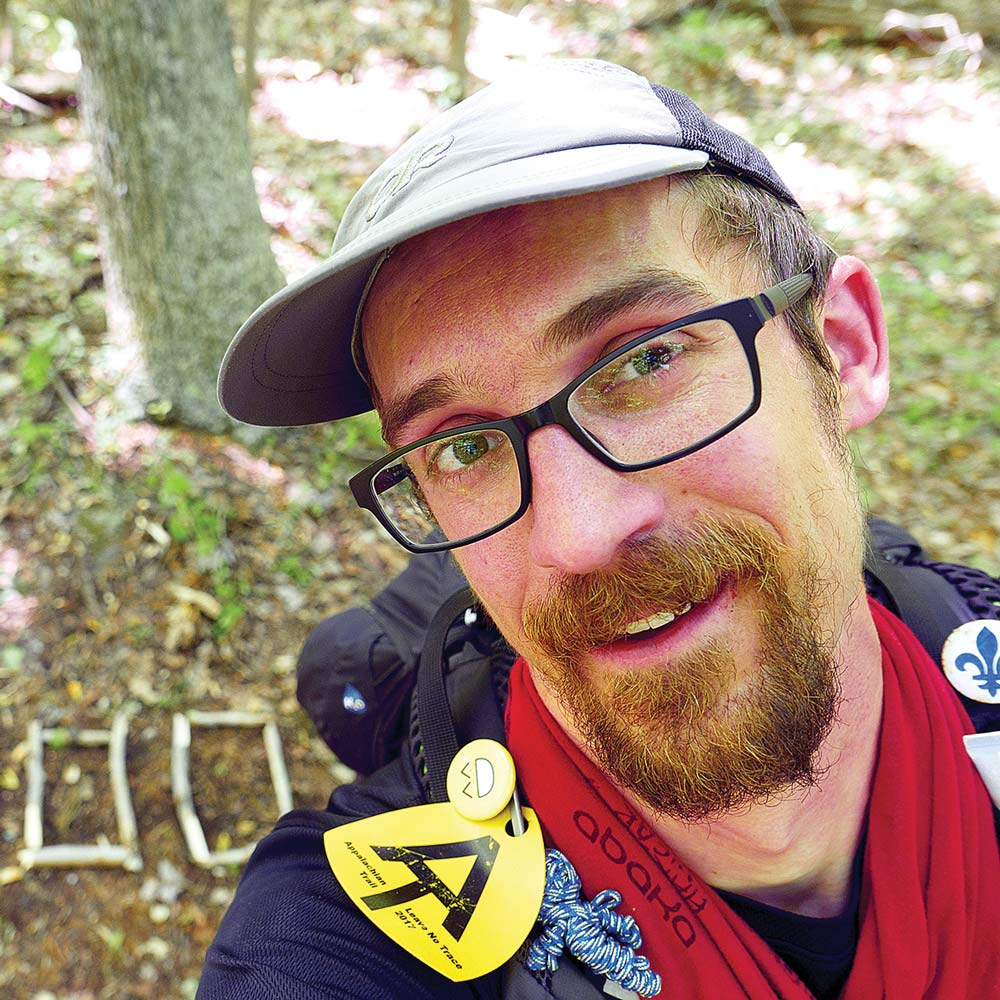
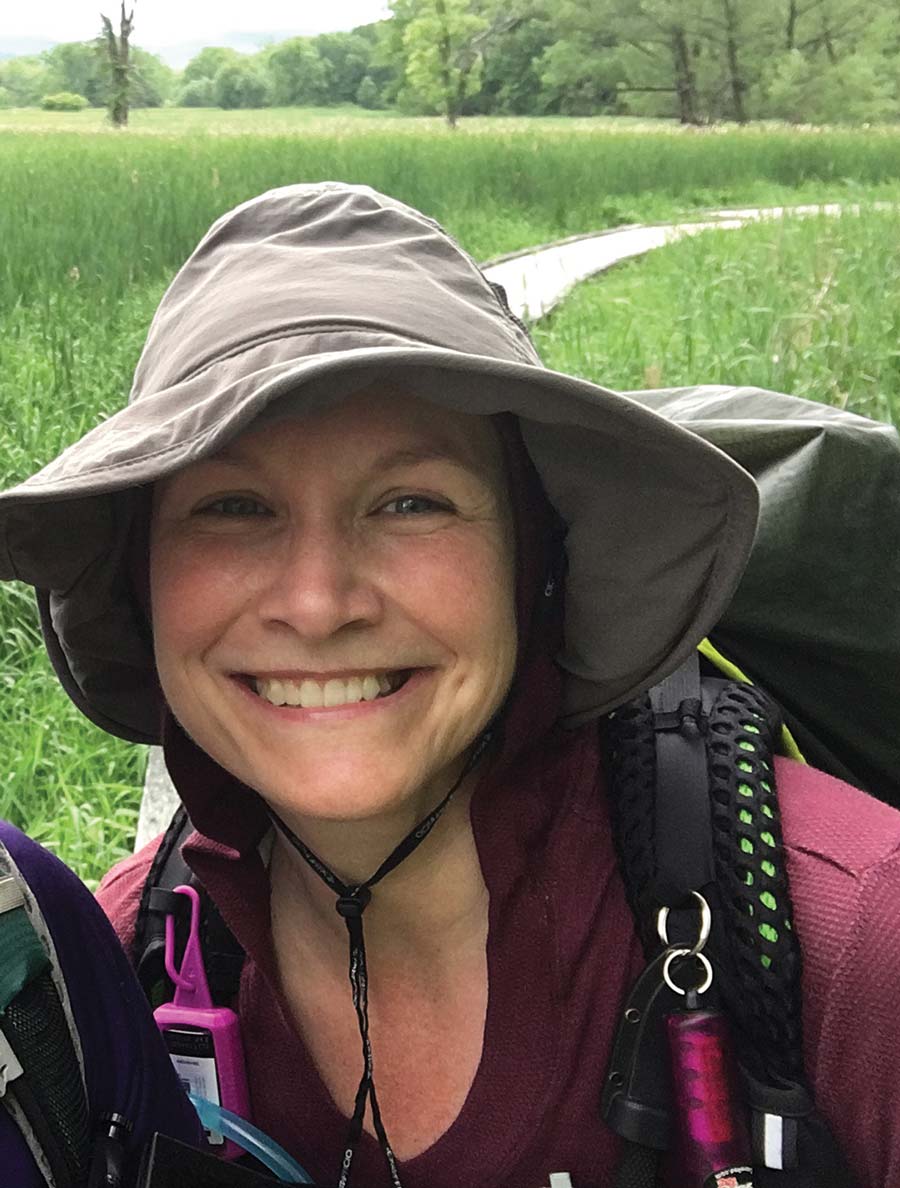
The Virginia Department of Transportation also stepped up their partnership on Appalachian Trail-related issues, working to ensure safe and well-marked road crossings across the commonwealth of Virginia. Dennis Sanders of the Bristol district was recognized with the ATC’s Virginia Regional Office Agency Partner of the Year Award for his work establishing parking areas in Bland County and better signage at road crossings, among other successes.
The effort connects communities, land managers, and non-profits to provide a wide-range of innovative programs for youth in northern Georgia. While the ATC supports teacher workshops, partners also support field days, urban campouts, outreach programs in schools, hiking, and camping experiences.
Moving forward, the network is building a Next Generation Forest Ambassador program for 14-to 16-year-olds, and looking forward to the increased impact they will have on inviting future stewards and advocates to the A.T., our national forests and our public lands.

Staff and dedicated volunteers visited sites to perform assessments that are used to determine how to deal with problem trees. A variety of options — such as removal, pruning, or long-term monitoring — may be used to ensure that visitors to the A.T. are not unwittingly placing themselves in a dangerous situation.

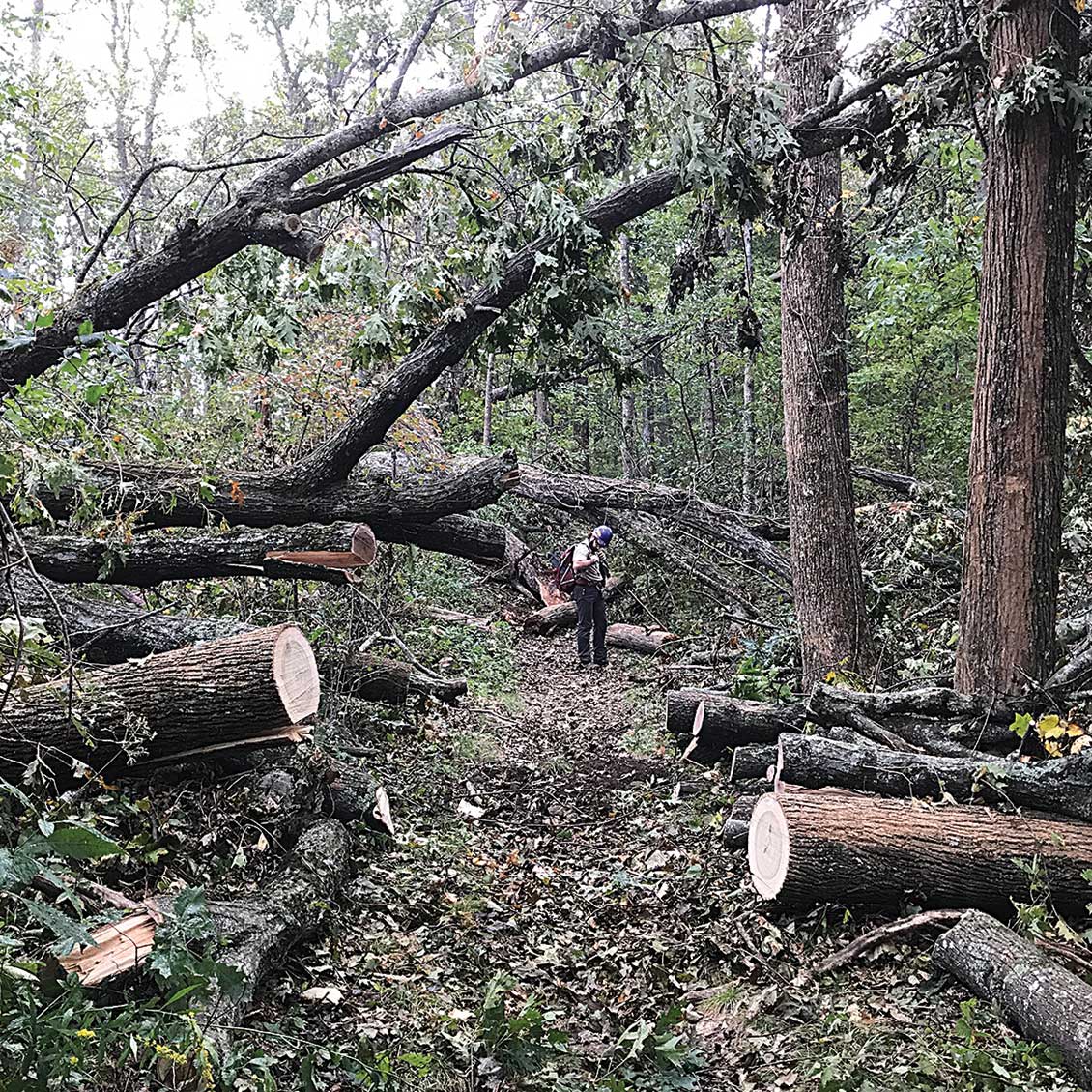
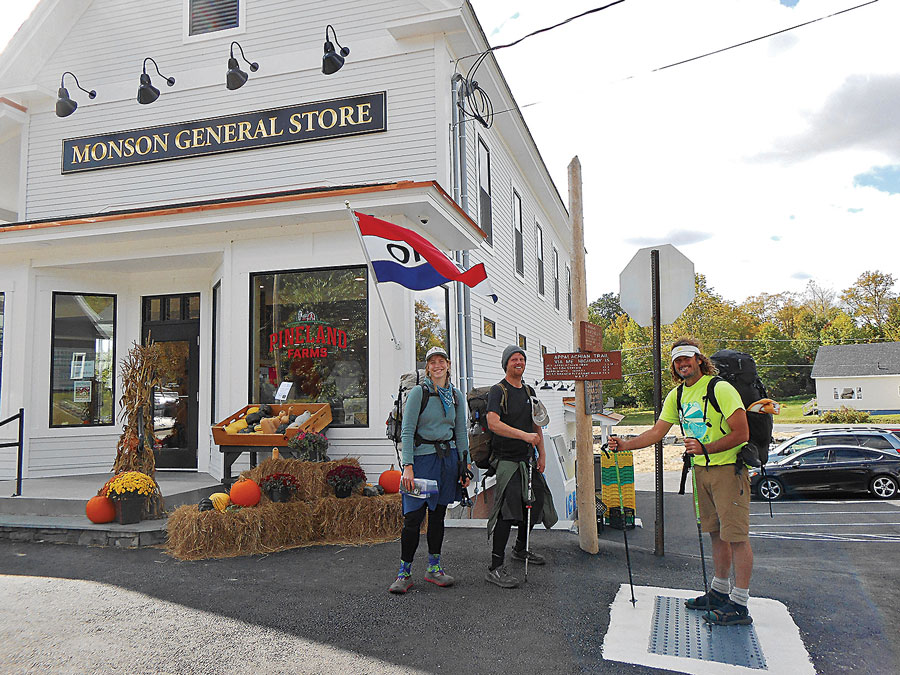
During the center’s second season of full time operation, we welcomed 4,412 visitors, which is an 82 percent increase over the 2016 season. This included 74 percent of northbound thru-hikers on the Trail.
Along with the hikers and visitors at the Visitor Center, our ridgerunner Kim Rosenbaum educated hikers on-trail about Leave No Trace principles and what to expect when entering Baxter State Park — 2017 was the first year of limited A.T. hiker permits in the park. We regularly communicated with park field staff regarding the permits, Trail incidents and events, questionable hiker behavior, and messaging. The visitor center staff, along with the Maine Appalachian Trail Club’s three ridgerunners, visited the park in June and we welcomed Katahdin Stream Campground staff and supervisors to Monson in July.
The ATC hosted several community events during the hiking season, including: presentations on local hikes, conservation, Trail history, and natural history, an artist’s open house, and a nature walk. We hope to expand this program in 2018 and beyond.

“Communities up and down the A.T. are grappling with the development of energy infrastructure,” says Lynn Davis, the ATC’s director of federal policy and legislation. Davis points out that the ATC is willing to work with energy companies, government, industry, and communities, to help guide decisions on future projects.
Given significant challenges and impacts from the Mountain Valley Pipeline on the A.T. landscape, in 2017, the ATC participated in crafting bipartisan federal legislation to address a number of concerns associated with the planning and regulatory process of natural gas pipeline projects. Known as the Pipeline Fairness and Transparency Act, the bipartisan bill was introduced by Republican U.S. Congressman Morgan Griffith who represents a portion of southwestern Virginia. Democratic Senators Tim Kaine and Mark Warner of Virginia have introduced similar legislation in the U.S. Senate. The bill addresses the protection of the A.T. and other national scenic trails as well as the public vetting and approval process by the Federal Regulatory Energy Commission. The bill would also focus on the cumulative visual impacts of any similar proposed project. It would also mandate that multiple projects meeting certain criteria would be considered as one project, increasing the likelihood of locating multiple projects in a single energy corridor.
The ATC’s vice president of Conservation and Trail Management, Laura Belleville, is encouraged by the language in the legislation. “It’s thoughtful and forward-looking and showcases the kind of policy work the ATC is working towards,” she says. “We’re going to see more energy projects that will have an impact on the Trail corridor. We need our members, volunteers, and supporters to engage with us as we advocate for meaningful policy development,” says Belleville, who believes that stronger policies and more effective decision-making processes can help limit the cumulative effects of future energy development on the A.T. landscape.


The A.T. Landscape Partnership — led by the ATC and the National Park Service — safeguards the wild, scenic, and culturally significant values of the A.T. and its surrounding lands while also increasing the chance of economic prosperity in towns and communities along the Trail. The grant will help ensure the values that make the A.T. landscape so unique — and cherished by so many — remain for generations to come.
To leverage the financial support from the Virginia-based foundation, the ATC will award land protection and organizational capacity building grants to qualified conservation organizations working within the A.T. landscape. Over the next three years, the ATC expects to grant annually up to $500,000 to projects that will accelerate the pace of A.T. Landscape Conservation projects. An additional $150,000 will be awarded each year to projects that implement new or existing strategic conservation plans, sustain and steward the resources that define the A.T. landscape, or increase public awareness of those resources.
The ATC is accepting proposals for projects on behalf of the A.T. Landscape Partnership, which is made up of public and private conservation groups working within the A.T. landscape.
Bruce’s Trail Name — “RTK” — comes from the theme of his thru-hike: “Returning to Katahdin.” Born and raised in Connecticut, Bruce learned to love the outdoors through hiking, backpacking, and canoeing in New England (including two summers of guiding canoe trips in the North Maine Woods and climbing Katahdin). He moved to Virginia for college and law school, met his wife Cheryl, and stayed to begin a career and a family. By his own words, Bruce has had a wonderful life thus far. In returning to Katahdin by way of the longest footpath in the world, Bruce will be reflecting upon his life as he retraces an earlier and shorter journey along the A.T., from north to south, from Connecticut to Virginia.
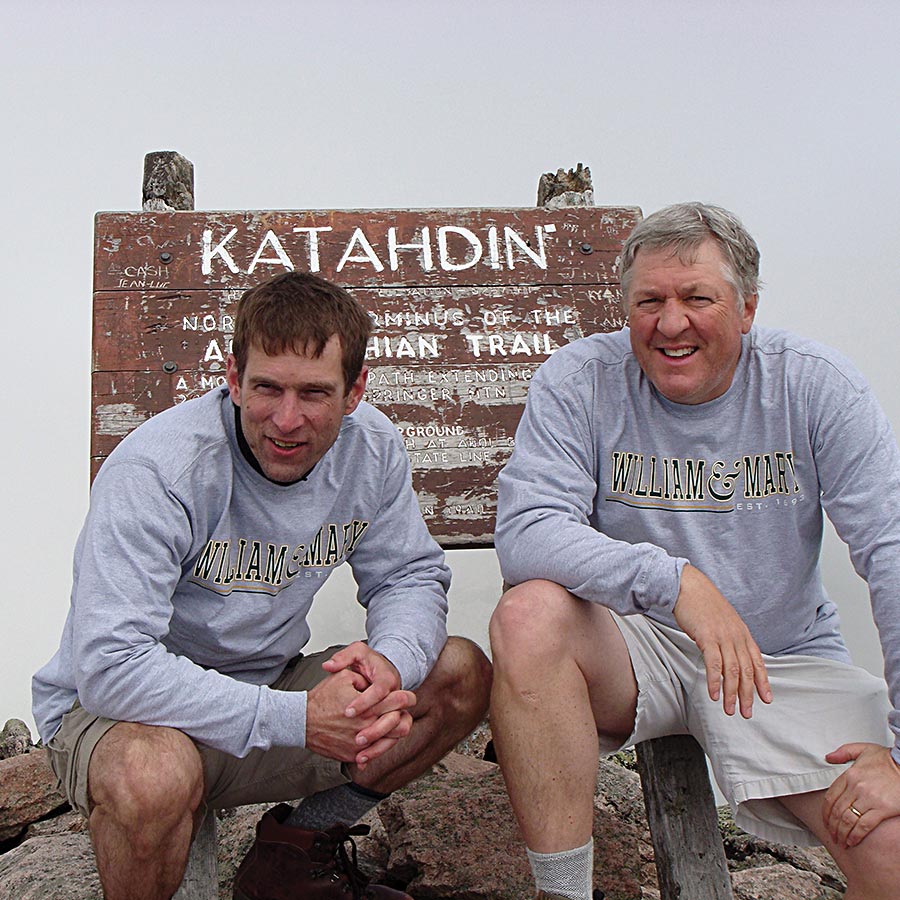
For more information about this challenge or to support Bruce’s goal visit: appalachiantrail.org/RTKChallenge
2017 / Our Supporters
Corporate Foundation and Non-Profit Partners
ICON
$1,000,000+
The Volgenau Foundation
LEADER
$100,000 – $499,999
National Park Foundation
TRAILBLAZER
$50,000 – $99,999
Phillip Morris USA, an Altria company
MAINTAINER
$25,000 – $49,999
Chesapeake Bay Trust
Devils Backbone Brewing Company
ENO
Google Mountain View
REI
The Whitehead Foundation, Inc
RIDGERUNNER
$10,000 – $24,999
AmazonSmile
Crenshaw Associates
DEPCOM Power
Harney & Sons Fine Teas
F. M. Kirby Foundation
L.L. Bean
M Powered Strategies, Inc.
National Forest Foundation
Osprey Packs
Elmina B. Sewall Foundation
Taco Mac
Vasque Footwear
HIKER
$1,000 – $9,999
ALDHA
AMC Delaware Valley Chapter
American Backcountry
Arborwear
Arnold & Porter
AT Passport
Atlas Guides
Bavarian Inn
BIS Global
Brookfield White Pine Hydro LLC
Brown Advisory Charitable Foundation
Cequent Consumer Products/ROLA
Dandelion Jewelry
Darn Tough Vermont
Eastern Outdoor Sales
Enterprise Rent-A-Car
Etowah Outfitters
Follow Bigfoot
Garden Homes Management Corporation
Garrett College
Georgia Appalachian Trail Club
Honeywell International
Hydro Flask
Jones Day
La Sportiva
LMAC Foundation, Inc
Makers4Good
Mast General Store
Mohawk Group
Monument Policy Group, LLC
Moonshine USA
Newman’s Own Foundation
Northwest Federal Credit Union
Point6
Salazon Chocolate Co.
Sawyer Products
SPOT
The Danny Cramer Foundation
The White Pine Fund
Top of The World
UMB CardPartners
Univision
York County Community Foundation
Mount Lafayette, New Hampshire
2017 / Donors
ANNUAL FUND LEADERSHIP CIRCLE
White Mountains, New Hampshire
![]() CHAMPION
CHAMPION
$500,000 or more
Estate of Mary K. Gall
![]() LEADER
LEADER
$100,000 – $499,000
Bruce Matson
Estate of Robert J. Shlifer
![]() PARTNER
PARTNER
$50,000 – $99,999
Estate of Peter L. Kennard
Fred & Alice Stanback
Estate of Carl Thompson
Greg# & Jan Winchester
![]() ADVOCATE
ADVOCATE
$25,000 – $49,999
William W. Farkas
Sam Ferguson
Peter & Cynthia Kellogg
Neall Family Charitable Foundation
Rubén# & Valerie Rosales
Tracy Rothstein
Robert Salerno
Ann Satterthwaite
![]() PROTECTOR
PROTECTOR
$10,000 – $24,999
Anonymous (2)
Estate of Joan Sibley
Daniel P. Collins
Courtney A. Daragan
Norman# & Adrienne Findley
Daniel & Laura Gold
Helen J. Hauser
Mary Higley# & Kyran Kennedy
Estate of Robert L. Hueston
Robert# & Catherine Hutchinson
Robert G. Maxfield
Sandra L. Ostman
Peter & Sally Parsonson
Nathaniel Stoddard#
Betsy# & Bob Thompson
Ron Tipton & Rita Molyneaux
Dudley & Barbara White
![]() STEWARD
STEWARD
$5,000 – $9,999
Anonymous (2)
Estate of David W. Appel
Kristin Bargmann
Colin# & Liz Beasley
Beth Bryan Critton#
Rich & Catherine Daileader
Audrey H. Duane
Rachel Ramona Eubank
Edward J. Gehringer
Glenn S. Harman
Robert Hutchins
Brian B. King*
Craig MacPherson
Janet M. Malcolm
Sandra Marra# & Chris Brunton
C. Arthur Morrow
Moxley Family Foundation
MSB Cockayne Fund
Shalom Nickel
Dana Olson
Michael O’Shea
Robert “Rhea” Patrick
George Perkinson
David H. Raymond
Jennifer K. Reilly
Calvin Sossoman
Marie E. Uehling
Evan Van Hook
![]() SUPPORTER
SUPPORTER
$1,000 – $4,999
Anonymous (3)
Jennifer Adler
Michael Jared Alvare
June C. Amer
Nancy D. Anthony
Bernard Arghiere
Bill & Liz Armstrong
Chase Arnett
Mark Aronson
Deborah Atwood & Robert Hyman
Jesse & Debbie Austin
Donald & Anne Ayer
Marian T. Baker
Ron & Jill Balistreri
John & Jean Ball
Eugene M. Bane
Kathy Becker
Greg & Anne Beckham
Laura* & Buzz Belleville
Holly Bevan
Hon. Donald & Megan Beyer
Joan Bingham
Judie Birchfield
Mary Blanton
Ralph & Jennifer Blumenthal
Marilynn Borkowski
Paul Brame
LT. Col. Ann H. Bransford
Bill Breen
Susan Brookreson
Matthew Brott
Michael S. Brown
Anne Brown
Bill & Marlene Bryan
David Buddington
Tim Burke
Nancy Burnett
Walter M. Burnett
Ron & Cathy Butler
Wes Callender & Pat
John Carey
Irad & Rebecca Carmi
David Carter
Thomas Cary
Ann Cashion
Frank Catena
San Choi
Diana Christopulos^ & Mark McClain
Kevin Click
Harry Cohen
Craig Coleman
Brian Cook
Robert P. Coon
Jane Cooper
Kathi & Steve Cramer
Beth Bryan Critton#
Bradley Currey
John W. Cutler
George & Elizabeth Danis
Brooke Davies
Davies Family Foundation
Scott & Kay Dawson
Joe DeLoach
Sophie Desbiens
Hilton B. Dickerson
Lauren Zitofsky Dowling
Constance DuHamel^ & Carolyn Handler
Suzanne Dunn
Ronald Duwell
David Eddy
Erik A. Eichinger
Diana R. Ellsworth
Inge Borre English
Charles Ermert
Eugene M. Espy
Marcia Fairweather
Charles S. Feaux
Jean Feldman
James Fields
Robert & Constance Fletcher
Arthur# & Denise Foley
Karen Foster
Suzanne Foster
Sky Foulkes
Erin Frackleton
Joel Frantzman
Rob & Kathryn Freer
Edward & Carole Friedman
Pamela Frossard
Charli Fulton
Lisa^ & Mark Gerchick
William Gibson
Don Glasgow
Nancy Glenz
Robert J. Glynn
Gerard G. Gold
Steve Golden
Mary Ann Gorman
Elizabeth Graham
Pamela & James Grange
Brian C. Gruber
John & Betty Grumm
Jeffrey D. Gump
Greer Gunby
John Gunther-Mohr
Edward# & Janelle Guyot
Jim Haggett
Doug Hankes
William A. Hart
Holly & Steve Hartel
Robert L. Harvey
Nicholas A. Herceg
Lance Herning
Lois E. Herr
Eli V. Hestermann
David C. Heston
Michael Hiemstra
Jason Hill
Ray W. Hiltbrand
Christina Hobbs
Arthur & Eloise Hodges
June Horsman
George Hovey
Dan Howe#
Andrew Huggins
Fred M. Hughson
David A. Hunt
Miles Hurley
Lydia James
Geoffrey & Christine James
Lewis James
Edward Johns
Eric Johnson
Henry Jonas
Allen Jones
Richard K. Judy
Edward Kaska
Sam Kearney
Scott Kendall
Jared & Reagan King
Estate of Charles Klabunde
Debra Kneisly
Scott Knudsen
Jason Kutz
Robert & Kelly Kyle
Lee & Brenda Larson
Tiffany Lawrence
Eric Lazerson
Dan & Deanna Lentz
Michael Leonard^
Kenneth & Patricia LeRoy
Roland A. Levandowski
Eugene Linfors
Judy & Bart Lipofsky
Robert E. Livezey
George & Judy Lockhart
Richard H. Longo
Ronald Lott
Sarah Lynch
Stephen Lynton
Robert G. Lyon
Anne Marie Macari
Kurt MacLeod
Peni A. MacMeekin
Peter Mangan
Paul Mansfield
Rich Margolin
Paula Martin
Marcus Martin
James Martineau
Stephanie Martz^
Albert Marx
L. Hardy Mason
Lance Matiste
Edward M. Mattison
James McCabe
Bryant McDaniel
David N. McFall
Paul McGraw
Judith McGuire & Arthur Tsien
Mary McKinley
Ginny Too McKinsey
Scott McQuilkin
Korey Mercier
Jill Millis
Cliff Milner
J. Randall Minchew
Don F. Mitchell
Preston & Christy Mitchell
Anne M. Mitchell
Paul H. Morrow
Richard M. Morten
Scott Moyer
Mark Mullins
Roc Myers
David Nagy
Barry L. Neel
Cherie Nikosey*
Tanya K. Nitterhouse
Jim & Katherine O’Hatnick
Terry & Kim Olah
Eric & Susan Olson
Clint Oster
Carl & Susan Overmiller
Andrew Parker
Charles Parrish
Sue C. Peck
Mark Perreault
William P. Person
Sarah Peskin
Sydney Peterson
Colleen T. Peterson#
Zelie Pforzheimer
Chad Pfrommer
Jennifer Pharr Davis#
Elizabeth Plentovich
John & Susan Poole
Jeffrey S. Poulin
Kathryn & Peter Powers
David Purdy
Tip & Ann Ray
Gregory Reck & Lelia Vann
Scott Redfern
Thomas Reifsnyder
Richard & Anna Reller
Shawn Remacle
F. Peter & Mary Rentz
Charles Reuben
John Rhodes & Elizabeth Allman
Barbara Ribner
Robert E. Rich^
Lemont K. Richardson
Craig Roberts
John Rodger
Thomas Rosato
Elizabeth L. Rossman
Betty Schroeder
Judith L. Seay
Beth Sersig
Abigail Seymour
Allyn & Karen Seymour
Kimball Simpson & Kathleen Donaghue
Candace Sinclair
John & Bonni Sirianni
Daniel Sloan
Landon Smith
Edward Sohl
Shirley M. Sontheimer
Brian Soucy
Michael Spirtas
Robert & Betsy Springman
Cyrus & Joanne Spurlino
Kevin St. Clair
Steven Staats
E. Jeffrey Stann
Willy Staples
Richard & Connie Steudel
Rodney & Sarah Stewart
Ernie Stovall II
Rosalind Suit
Nancy & Bruce Summers
Kurt Summersgill
Steven P. Telford
Lisa A. Teot
G. Carleton Thackston
Steuart H. Thomsen
James Truesdale
Edward R. Uehling
Michael Vaden
Hon. C. Stewart Verdery^
Denise K. Vowell
Edward Vrba
Jeff Walden
William A. Weary
Margaret & Elizabeth Weller
Walter G. Wells
Marilee Wheeler
Joseph White
Richard C. Whiteford
Lyn Widmyer
Ted Williams
Rush Williamson, Jr.
Russell Wise
Pamela Witcher
Melissa Wohlgemuth
William Womack
Jonathan & Emily Wood
Mike Worley
Frank W. Wright
Christina L. Wtulich
Sara^ & Paul Yanes
Rebekah Young
Rich Zadora
Benjamin Zax
Jason Zink
# Denotes ATC Board member
^ Denotes ATC Advisory Circle member
* Denotes ATC Staff member
2017 / leadership
A.T. near Carlisle, Pennsylvania
ATC Executive Leadership
Suzanne Dixon / President & CEO
Stacey J. Marshall / Vice President of Finance & Administration
Mark Saari / Acting Vice President of Membership & Development
Laura Belleville / Vice President of Conservation & Trail Programs
Brian B. King / Publisher
Javier Folgar / Director of Marketing & Communications
Lynn Davis / Director of Federal Policy & Legislation
Cherie A. Nikosey / Director of Human Resources
ATC Regional Directors
Andrew Downs / Central and Southwest Virginia Regional Director
Karen Lutz / Mid-Atlantic Regional Director
Hawk Metheny / New England Regional Director
Morgan Sommerville / Southern Regional Director
ATC Board of Directors
Sandra Marra / Chair
Greg Winchester / Vice Chair
Elizabeth (Betsy) Pierce Thompson / Secretary
Mary Higley / Treasurer
Colin Beasley
Beth Critton
Shalin Desai
Norman P. Findley
Arthur Foley
Edward R. Guyot
Daniel A. Howe
Robert Hutchinson
Colleen Peterson
Jennifer Pharr Davis
Rubén Rosales
Nathaniel Stoddard
President’s Advisory Circle
Hon. C. Stewart Verdery, Jr. / Chair
Shooter Starr / Vice Chair
Diana Christopulos
Constance I. DuHamel
Lisa Koteen Gerchick
Jessica Herrera-Flanigan
R. Michael Leonard
Stephanie Martz
Robert Rich
Thomas Torrisi
Sara Hazelwood Yanes
31 Trail Maintaining Clubs
Natural Bridge Appalachian Trail Club
Maine Appalachian Trail Club
Appalachian Mountain Club
Randolph Mountain Club
Dartmouth Outing Club
Green Mountain Club
AMC – Berkshire Chapter
AMC – Connecticut Chapter
New York-New Jersey
Trail Conference
Wilmington Trail Club
Batona Hiking Club
Keystone Trails Association
Allentown Hiking Club
Cumberland Valley
Appalachian Trail Club
York Hiking Club
Mountain Club of Maryland
Potomac Appalachian Trail Club
Old Dominion Appalachian Trail Club
Tidewater Appalachian Trail Club
AMC – Delaware Valley Chapter
Outdoor Club at Virginia Tech
Roanoke Appalachian Trail Club
Piedmont Appalachian Trail Hikers
Mount Rogers Appalachian Trail Club
Tennessee Eastman Hiking and Canoeing Club
Carolina Mountain Club
Smoky Mountains Hiking Club
Nantahala Hiking Club
Blue Mountain Eagle Climbing Club
Georgia Appalachian Trail Club
Susquehanna Appalachian Trail Club
Next Generation Advisory Council
Alivia Acosta
Brady Adcock
Oforiwaa Pee Agyei-Boakye
Jim Beckmann
Olympia Bowker
Stephen Eren
Kelly Garvy
Dakota Jackson
Brittany Leavitt
Marcela Maldonado
Natrieifia Miller
Kristin Murphy
Tony Richardson
Irene Syphers
Amanda Wheelock
Michela Williams
ATC Stewardship Council
Beth Critton / Chair
Cosmo Catalano / Trail and Camping Committee Chair
Heather Clish / Landscape and Resource Protection Committee Chair
Tom Ottinger / Youth and Diversity Committee Chair
Rebekah Young / Partner Communications and Resource Committee Chair
William (“Bill”) D. Bryant
Ashton Cole
Fred Tutman
Rush Williamson
Tom Mullin
Roger Osorio
Trudy Phillips
Ryan W. Smith
Dr. Jeremy F. Wimpey
Nicole Wooten

